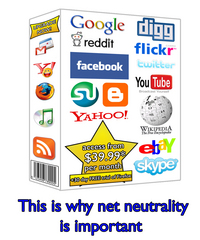
|
On June 19th, the Avril Lavigne fansite Avril Bandaids launched a “Girlfriend” YouTube Viewer (It’s now been retired) with the intention of making “Girlfriend” the #1 YouTube video of all time. The url that hosted the viewer reloaded the video every 15 seconds. The theory was that Avril fans could load up that url, let it run, and Avril would get the top video spot in no time.So they leveraged their leverage by provoking media outrage, causing millions of people to watch the video to see what it's about, and now causing a third wave of blog posts, thus producing still more views.Well, Entertainment Tonight, Perez Hilton, Wired.com, The Globe and Mail, The Sydney Morning Herald, and many others picked up the story and started crying “foul.” How dare this hardcore group choose the number one YouTube video for us!? How dare they! And that’s where this story gets good.
There was no foul. YouTube caps it’s views per specific IP at 200 per day. (That may sound like a lot, but it’s not enough for a small legion of hardcore fans to make a dent in a number approacing 100,000,000.) There was no way they could game YouTube in the way they were purporting; and they knew it all along.
— “Girlfriend” Video Tops YouTube With Viral Viral Marketing (not a typo), by Wade, VoltageCreative.com, 20th August 2008
Now that's clever.
Not the sort of thing you'll ever see come out of telcos or cablecos, either.
-jsq



